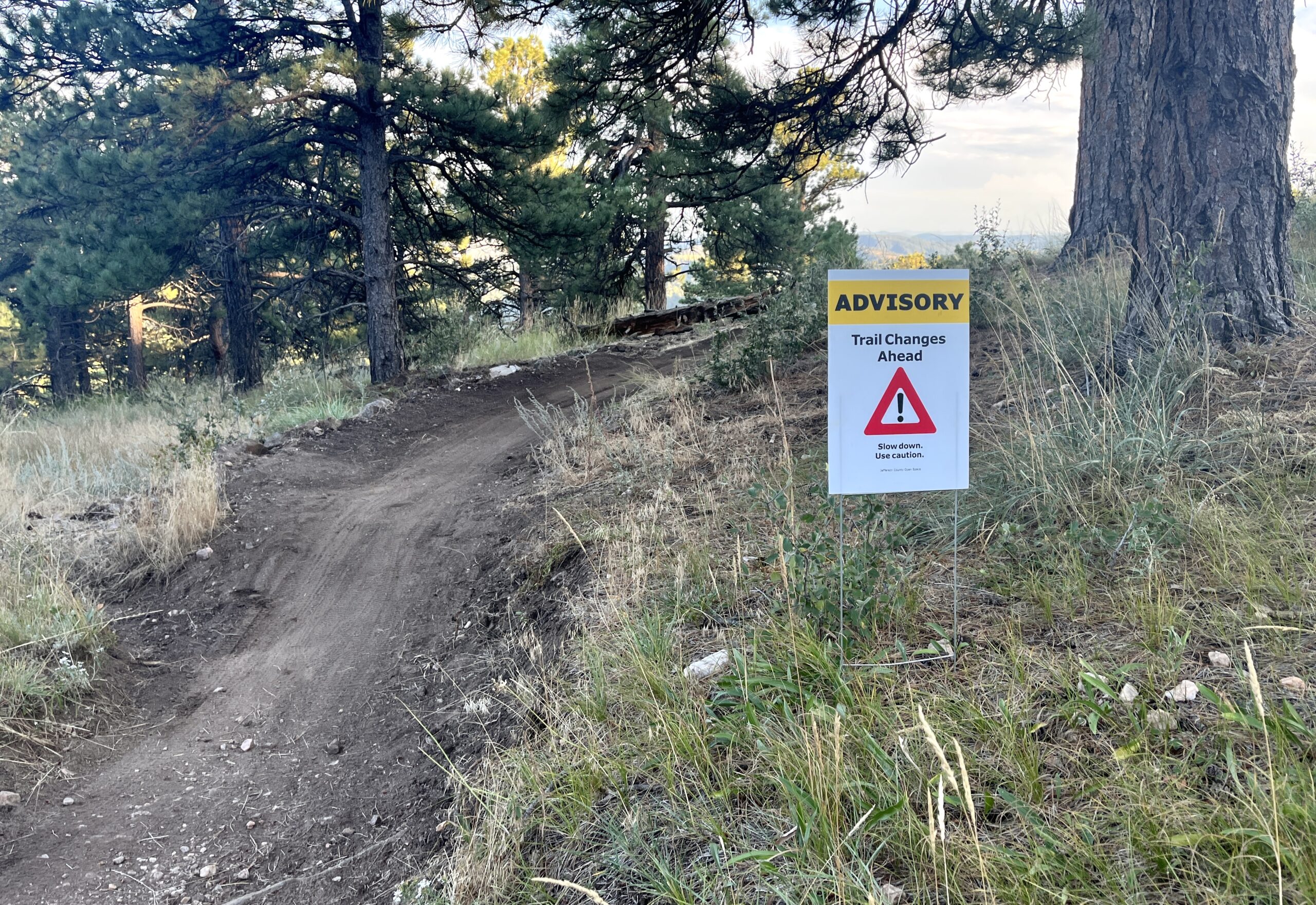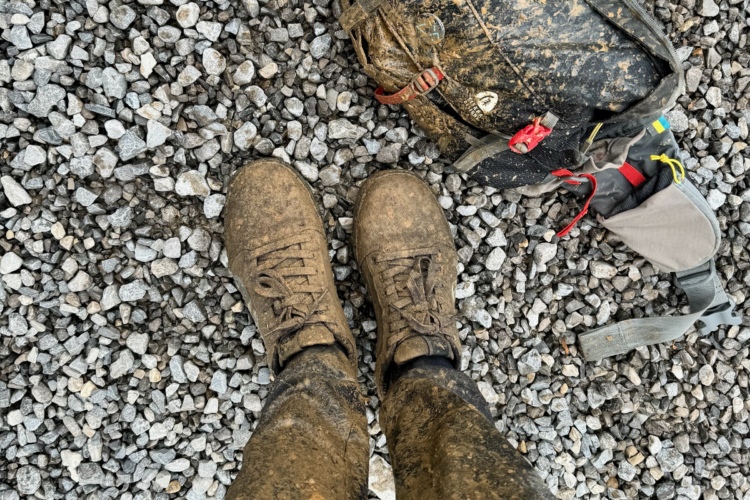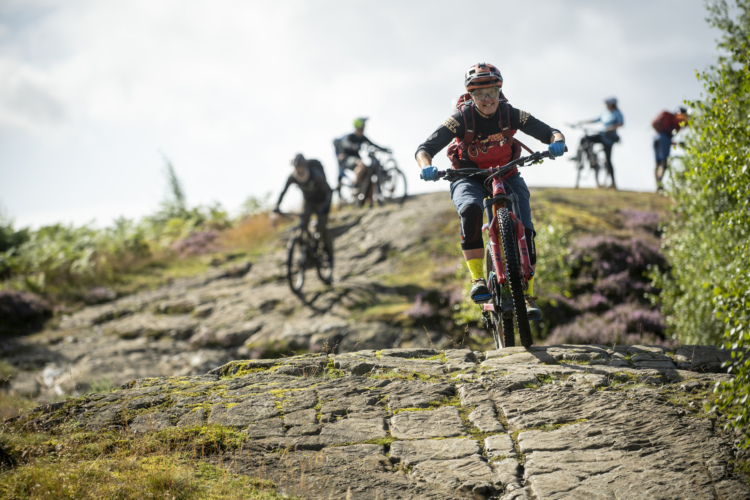
Any opinions expressed in this article belong to the author alone, and do not necessarily represent the opinions of Singletracks.com.
A multi-use trail in one of my local open space parks was recently re-routed and re-built. The trail, about a mile long, is arguably less fun than it used to be, at least for some mountain bikers. The grade has been reduced dramatically and instead of water bar bump jumps over gaps and into gnawed up ruts and corners you’ll find a smooth trail tread, gentle, sweeping corners and grade reversals meant to shed water.
As a friend and I prepared to ride one day after work, I scanned local trail reports to read eye witness accounts of the new trail and listened to chatter at the trail head when we arrived.
By these accounts, the trail had been “sanitized!”
Cleaned up. Dumbed down. Anti-mountain biked. Whatever you want to call it, most were calling it a terrible move by the local land manager and undoubtedly a slight at our two-wheeled user group. Folks were mad and suddenly ready to contact their local representatives to file grievances and finally become a mountain bike trail advocate.
I’ll admit as a mountain biker who owns a 35lb, trail-smashing bike I lovingly call a “monster truck” the trail isn’t nearly as fun as it used to be–but I also realize why land managers and trail builders are steering away from the steep, erosion-prone trails of yesterday, fun as they may be.

Another word for “santization”
What a wet year. Here in Colorado, on the West Coast and on the East Coast. The earliest indications of a sopping summer came from two seasons before when ski resorts throughout the West experienced record winters. In the forests above Los Angeles, trail workers who are constantly dealing with the effects of fires, the loss of vegetation, and irregular wet weather years planned to continue the backlog of trail work from last year but instead had to unbury themselves from the torrents of rain storms this winter and spring.
“It’s been a little overwhelming,” Matt Baffert told me in April. Baffert is the founder of the Lowelifes Respectable Citizens Club, a trail work group centered around the Angeles National Forest. “We’re kind of at that period now where so much of the work we did last year is becoming undone.”
Trail workers along the coast in Santa Cruz and San Diego dealt with the same thing.
“It’s been unrelenting,” said Matt Bartelt of the San Diego Mountain Biking Association. “It’s just crazy the amount of water that goes through there and the rutting this year. Everything is so wet, and because everything’s so heavy, it rains again, and the water’s just running down trails and eroding them away.”

The damage is visible on trails throughout Colorado, but it is more pronounced on older, legacy trails; the ones with fewer switchbacks and steeper grades. They make for harder climbs but can be fun downhills for fast, technical riders. But these trails have a habit of funneling water down them rather than shedding water away and over time water pulls more dirt down the trail with it and the singletrack gets deeper and wider. If you ride one of the trails around the Front Range that was built within the past five years, the difference is remarkable. There may be some loose rock gathered on the tread after a rain storm but for the most part, newly built trails are in good shape.
When we spoke to the Vermont Mountain Bike Association about the condition of their trails after record flooding this summer, I was surprised to hear the damage wasn’t too bad.
“The vast majority of the 900 miles of trails that VMBA stewards in the state made out pretty well, mainly due to modern trail building techniques and water management,” VMBA executive director Nick Bennette told Singletracks contributor Cris Cadiz.
The trails that did not fare as well in Vermont were “older multi-use trails that have been in the park for a while,” according to a VMBA sub-chapter president.
While these older trails in any state are full of charm and have the character to turn novice mountain bikers into skilled climbers and bike handlers, they aren’t as sustainable as modern trails. Trail work that might appear to “sanitize” a segment or dumb it down is often necessary to make it longer lasting and more sustainable.
Trail care is work, workers are hard to find, and land management agencies are under-funded
It’s been two summers since I’ve been out on the trails for a volunteer day. Life is busy and for me, summer is the busiest season. I can’t tell you how many times I’ve had the volunteer calendar open this year, only to X out of it and tell myself I’ll sign up for a day next week. I imagine I’m not the only mountain biker in this position. Most of my mountain bike friends are also working professionals and time is money.
Volunteer work is also how mountain bike organizations who partner with land management agencies get the bulk of their trail building and maintenance done, and sourcing volunteers has never been an easy task. Membership money often just helps organizations keep the lights on while pursuing grant money is how new trail networks, usually costing hundreds of thousands or millions of dollars, get built.
Funding for federal land management agencies like the Departments of Agriculture and Interior also pales in comparison to the Departments of Health and Human Services, Social Security, the Treasury, and Defense. I can’t say for sure, but the U.S. Forest Service is probably one of the few federal agencies that relies on volunteer work to accomplish its mission. The agency regularly partners with nonprofit volunteer organizations to tackle its trail maintenance backlog, worth $300 million when I wrote this story in 2019.
Has much changed since then? Not really. Chris Nichols, a Forest Recreation Program Manager for the Cibola National Forest told Jeff Barber just a month ago that hiring for positions was still a major challenge.

“In years past we’ve seen an increased interest in our trails but not as much interest from candidates seeking to help protect those opportunities. Most of us who work in trails/recreation are often enthusiasts ourselves,” he said.
This particular story was about the USFS proposing $5 trail use fees to mountain bikers and equestrians to help offset its maintenance backlog.
When we asked readers in a survey if they would be willing to pay a fee to ride local mountain bike trails, 20% of respondents said no to any kind of fee. Almost 20% said less than $5 per ride, 32% were willing to pay $25-50 per year, and 18% would pay more than $50 a year.
The culture of complaining about trails likely won’t ever change and it’s hard to say if the challenges of paying for trails, working with bureaucratic agencies, and sourcing volunteers will either.
But trail design has changed and if a line has to be rebuilt, it’s obvious what kind of design makes the most sense long term. Unfortunately for some that means a trail that might be less fun to ride but will hold up to increasingly wild weather, more trail users and a limited amount of volunteers.








11 Comments
Sep 23, 2023
If every trail user could spend 1/15th of the time they might spend riding annually volunteering, the whole landscape of trails in the US would change dramatically. The value of a volunteer hour in the United States is estimated to be $31.80. I would argue that trail volunteers are worth even more because it is really the equivalent of hiring contractors. But using that math giving $100 it’s just a little more than three hours of one person’s time. It doesn’t go very far.
In light of all this, I just try to be grateful for the trails we have. Some are better than others, but almost all of them are better than riding in the street.
Sep 25, 2023
I think the term "trail sanitation" gets used in 2 scenarios and they aren't the same:
Look, you can build a Ladies Only-style trail as a sustainable trail, it just will cost an arm and leg. If you are dealing with budgets, either of money or time, it gets hard. For technical trails, I would argue the best scenario or process is the following:
Sep 23, 2023
If every trail user could spend 1/15th of the time they might spend riding annually the whole landscape of trails in the US would change dramatically.
Oct 21, 2023
Sep 25, 2023
The local talk of sanitation is legitimate given the county's record. Look no further than the surrounding county's approaches for proof.
Lastly, that people who don't volunteer can't complain is also unfair. Especially when Jeffco obviously rebuilt Belcher without the input of any competent MTB trail builder.
Sep 25, 2023
Sep 25, 2023
Sep 23, 2023
If trail builders and maintainers can take modify the trail as needed.
There is a difference between someone turning a gap into a table because it was too scary for them, or stacking rocks because the drop was too steep, and a builder fixing their work.
My local trails (where I am as I type this, having a snack) is a bit of the wild West. The manager here is hands off, do what you want (also, ride it until they pave it, with more warehouses under construction taking out more trails). Dumbing down here is a big issue, since some people like to send it, while others have FOMO and stack rocks to make stuff safe for them.
Sep 22, 2023
Poor trail design that is appearing like it was planned to erode and degrade at an alarming rate. So, if better consideration is put into the design from the start, "sanitized" wouldn't have to be a term used to describe a trail that is fun.
Sep 22, 2023
Sep 23, 2023
After 30 years of doing trail maintenance with the local snowmobile club as well as bike and other offroad clubs, I really don't see enough people signing up to volunteer.
As for people "Dumbing" it down... I haven't witnessed it much but... I spend most of my bike time riding deer and elk trails instead of mainsream trails. The animals are clearly carrying PhD's in trail building!